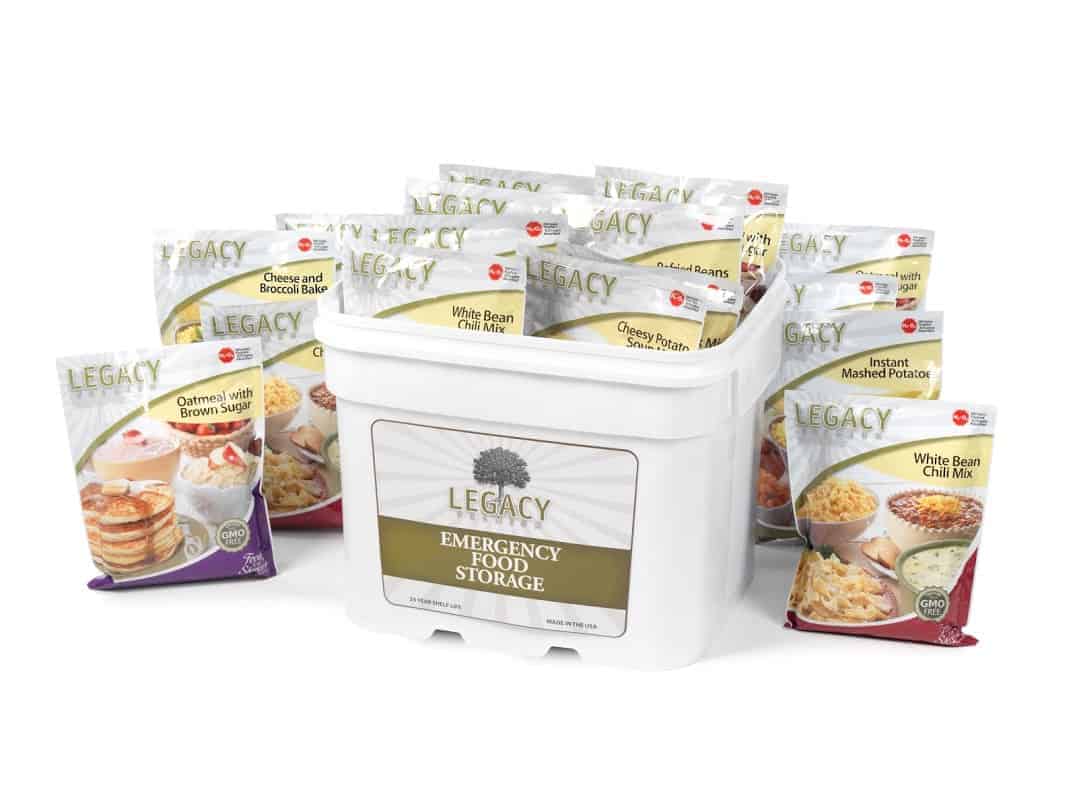Legacy foods, culinary treasures passed down through generations, hold a profound cultural significance and play a vital role in shaping our identities. From heartwarming family recipes to iconic dishes that define regional cuisines, these foods are not mere sustenance but threads that connect us to our past, present, and future.
Their preservation and transmission ensure that these culinary traditions continue to enrich our lives, while their evolution and adaptation reflect the ever-changing tapestry of our food culture. Legacy foods are not just about nostalgia; they are living, breathing expressions of our collective heritage that continue to inspire and nourish us.
Cultural Significance of Legacy Foods

Legacy foods are culinary treasures that carry profound cultural significance and historical relevance. They serve as edible threads that connect individuals to their heritage and identity, embodying the traditions, beliefs, and values of their ancestors. These foods often evoke a sense of nostalgia and belonging, fostering a deep emotional connection between people and their cultural roots.
Historical Relevance
Legacy foods have played a pivotal role in shaping culinary traditions across cultures. They reflect the ingenuity and resourcefulness of past generations, who relied on local ingredients and cooking techniques to create dishes that sustained and nourished their communities. These foods have evolved over time, adapting to changing circumstances while preserving their essential character.
They offer a glimpse into the lives of our ancestors, providing a tangible connection to their struggles, triumphs, and daily routines.
Emotional Significance
Legacy foods hold immense emotional significance, evoking memories and creating a sense of continuity between generations. The flavors, aromas, and textures of these dishes trigger fond recollections, reminding us of family gatherings, celebrations, and cherished moments from our past. They become symbols of love, comfort, and tradition, passed down from one generation to the next.
Sharing legacy foods with others is an act of cultural transmission, fostering a sense of community and preserving the culinary heritage for future generations.
Examples
*
-*Grandma’s Sunday Roast
This classic British dish is a symbol of family and togetherness. The aroma of roasting meat and vegetables fills the house, creating a warm and inviting atmosphere.
-
-*Indian Thali
A traditional Indian meal served on a metal platter, the thali represents the diversity and abundance of Indian cuisine. It typically includes a variety of dishes, each representing a different flavor profile and region of the country.
-*Mexican Tamales
These cornmeal-based dumplings filled with meat, vegetables, or fruit are a staple of Mexican cuisine. They are often made during special occasions and family gatherings, symbolizing unity and celebration.
These are just a few examples of the countless legacy foods that hold cultural significance around the world. They are a testament to the enduring power of food to connect us to our past, present, and future.
Preservation and Transmission of Legacy Foods

Preserving and transmitting legacy foods is crucial for maintaining cultural continuity. Various methods and techniques are employed to safeguard these culinary treasures for future generations.
One significant approach involves preserving the actual food items. Traditional techniques like drying, smoking, pickling, and fermentation extend the shelf life of foods while preserving their unique flavors and nutritional value. For example, in the Mediterranean region, sun-dried tomatoes and olives have been preserved for centuries, capturing the essence of the local cuisine.
Role of Community Involvement and Cultural Institutions
Community involvement plays a vital role in transmitting culinary traditions. Family recipes, cooking techniques, and food-related customs are passed down through generations within families and communities. Cultural institutions, such as museums, culinary schools, and historical societies, also contribute to the preservation and transmission of legacy foods by organizing workshops, exhibitions, and documentation projects.
Examples of Successful Preservation Efforts
Numerous successful preservation efforts have demonstrated the impact on cultural continuity. The Slow Food Movement, for instance, has gained global recognition for its efforts to protect and promote traditional food cultures. Initiatives like the Ark of Taste, a catalog of endangered foods, have helped raise awareness and support for preserving culinary diversity.
In the United States, the National Endowment for the Arts’ Folk & Traditional Arts program has supported initiatives that document and revitalize traditional foodways. These efforts have contributed to the preservation of Native American, African American, and Appalachian food traditions, ensuring their continued relevance and cultural significance.
Evolution and Adaptation of Legacy Foods
Legacy foods have undergone significant transformations over time, influenced by changing tastes, dietary preferences, and cultural exchanges.
In terms of ingredients, legacy foods have adapted to the availability of new ingredients brought by trade and migration. For example, tomatoes, originally from South America, were introduced to Europe in the 16th century and quickly became a staple in many traditional dishes, such as Italian pasta sauces and Spanish gazpacho.
Preparation Methods
Preparation methods have also evolved to suit changing lifestyles and technologies. The advent of refrigeration and food processors has made it possible to preserve and prepare foods more efficiently. For instance, traditional methods of smoking or drying meat have been replaced by modern refrigeration and vacuum-sealing techniques.
Cultural Influences
Cultural influences have played a significant role in shaping the evolution of legacy foods. As cultures interact and exchange ideas, culinary traditions blend and new dishes emerge. For example, the introduction of Chinese cuisine to the West has led to the creation of fusion dishes like orange chicken and General Tso’s chicken.
Adapting to Changing Tastes and Dietary Preferences
Legacy foods have also adapted to changing tastes and dietary preferences. Health concerns and dietary restrictions have led to modifications in traditional recipes, such as reducing fat and sugar content or using alternative ingredients like gluten-free flours.
Innovative Reinterpretations
In recent years, there has been a growing trend of innovative reinterpretations of traditional recipes. Chefs and home cooks are experimenting with new flavor combinations and presentation styles, while still staying true to the essence of the original dish. For example, classic French dishes like coq au vin have been reimagined with modern ingredients and techniques, resulting in dishes like coq au vin blanc with roasted root vegetables.
Socioeconomic Impact of Legacy Foods
Legacy foods play a significant role in shaping the economic and social fabric of communities. They contribute to local economies, support sustainable food systems, and serve as a catalyst for community development.
Economic Impact
- Job Creation:Legacy foods support local businesses and create employment opportunities in farming, processing, and culinary sectors.
- Tourism:Legacy foods can attract tourists and boost revenue for local businesses by showcasing unique culinary experiences.
- Economic Diversification:Promoting legacy foods can diversify local economies and reduce reliance on a single industry.
Social Impact
- Cultural Preservation:Legacy foods embody cultural traditions and preserve local heritage.
- Community Identity:They foster a sense of place and create shared experiences within communities.
- Community Development:Programs that leverage legacy foods can promote community cohesion, revitalize neighborhoods, and improve access to healthy food.
Programs and Initiatives
- Slow Food USA’s Ark of Taste:This program identifies and celebrates endangered legacy foods, promoting their preservation and revival.
- James Beard Foundation’s Chefs Boot Camp:This program supports chefs who are working to preserve and promote legacy foods in their communities.
- USDA’s Farm to School Program:This program connects schools with local farmers and supports the use of legacy foods in school meals.
Legacy Foods in Modern Cuisine
Legacy foods play a significant role in contemporary culinary trends and fine dining. Chefs are increasingly incorporating traditional flavors and techniques into modern dishes, creating a fusion of heritage and innovation.
Reimagining Legacy Foods for a New Generation
Modern chefs are reimagining legacy foods in various ways:
-
-*Preserving Traditional Flavors
Chefs use traditional ingredients and cooking methods to preserve the authentic flavors of legacy foods, such as using heirloom grains or fermentation techniques.
-*Incorporating Modern Techniques
They combine traditional flavors with modern cooking techniques, such as sous vide or molecular gastronomy, to create innovative dishes that respect the heritage while pushing culinary boundaries.
-*Exploring Cross-Cultural Influences
Chefs draw inspiration from different cultures, blending legacy foods with global flavors to create unique and exciting dishes that reflect the interconnectedness of modern cuisine.
Legacy Foods and Health

Legacy foods are often associated with traditional diets that have been passed down through generations. These diets are typically rich in whole grains, fruits, vegetables, and lean proteins. Research has shown that diets based on legacy foods can provide numerous health benefits, including:
- Reduced risk of chronic diseases such as heart disease, stroke, type 2 diabetes, and some types of cancer.
- Improved weight management.
- Boosted immunity.
- Enhanced cognitive function.
Nutritional Value of Legacy Foods
Legacy foods are typically nutrient-dense, meaning they provide a high amount of nutrients relative to their calorie content. For example, whole grains are a good source of fiber, B vitamins, and minerals such as iron and zinc. Fruits and vegetables are rich in vitamins, minerals, and antioxidants.
Lean proteins provide essential amino acids, which are necessary for building and repairing tissues.
Traditional Diets and Overall Well-being, Legacy foods
Traditional diets based on legacy foods have been shown to promote overall well-being. For example, a study published in the journal JAMA Internal Medicine found that people who followed a traditional Mediterranean diet had a lower risk of death from all causes, including heart disease, cancer, and stroke.
Another study, published in the journal The Lancet, found that people who followed a traditional Japanese diet had a lower risk of developing type 2 diabetes.
Detailed FAQs
What are the key characteristics of legacy foods?
Legacy foods are dishes or ingredients that have been passed down through generations, often within a specific cultural or geographic region. They are typically associated with traditional cooking methods, local ingredients, and a deep connection to the community’s history and identity.
How do legacy foods contribute to cultural identity?
Legacy foods play a crucial role in shaping cultural identity by providing a tangible link to the past. They embody the values, traditions, and beliefs of a particular community and serve as a source of pride and belonging.
What are some examples of successful legacy food preservation efforts?
Successful legacy food preservation efforts include initiatives such as seed banks, community gardens, and culinary heritage programs. These programs aim to safeguard endangered food varieties, document traditional cooking techniques, and promote the transmission of culinary knowledge to future generations.
